Damping Even The Smallest Displacements
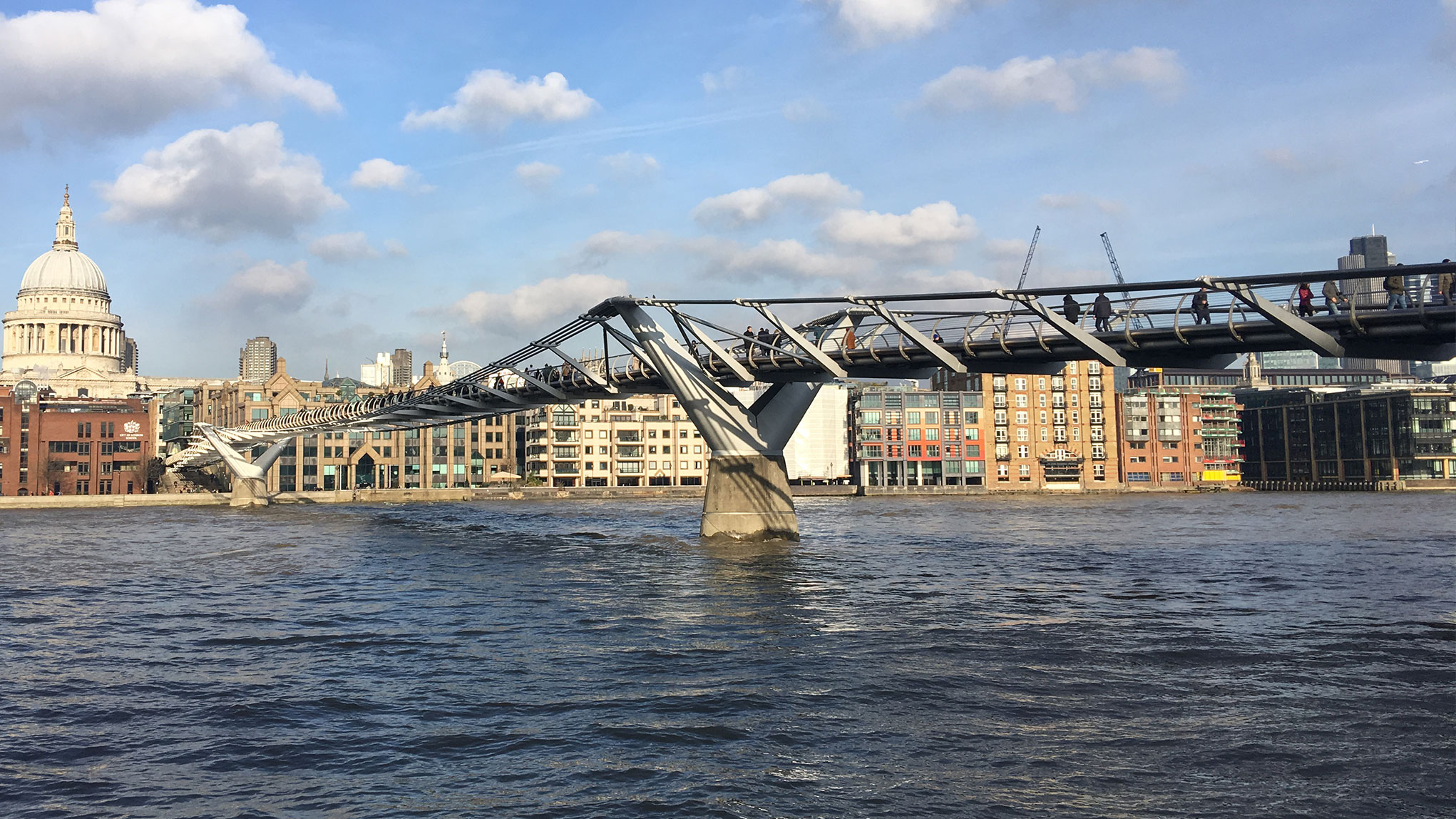
(Header Image: chargers.com)
While fluid viscous dampers perform well under seismic loads that result in medium to large displacements, sometimes structures need dampers for smaller displacements. In these cases, low amplitude dampers can be used to apply damping to a more rigid structure that only experiences small displacements from earthquakes, wind and/or pedestrian vibrations.
Developing the Low Amplitude Damper
Interestingly enough, low amplitude dampers were not originally designed for structures. In fact, they weren’t even designed for use here on Earth. As NASA was making remarkable accomplishments in space exploration, one problem engineers kept having was successfully using oil-filled products in space. Even the tiniest vapor outgassing from a conventional seal could cause major problems in the vacuum and weightlessness of space. Taylor Devices was able to solve this problem by developing a product known as the hermetically-sealed, metal bellows damper. Years later, this technology was granted access by the U.S. Government to be used for commercial purposes. The team at Taylor Devices quickly incorporated the low amplitude dampers in structures around the world.
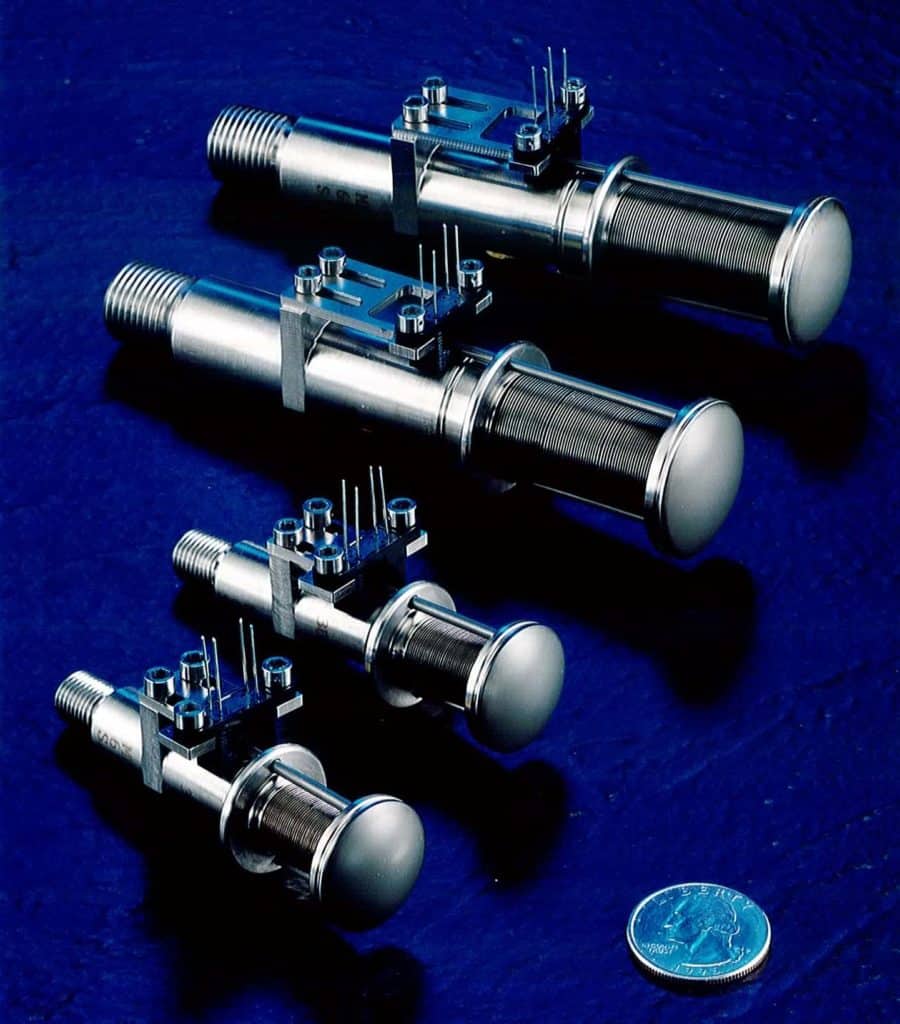
How Do Low Amplitude Dampers Perform?
Unlike conventional fluid viscous dampers, low amplitude dampers are able to apply damping at very low displacements, even down to 0.001 inches (0.0254mm) or less. How is this possible? It is simply a matter of recognizing the requirements at all frequencies and amplitudes and designing appropriately with the right product. Sometimes, the limiting factor is not actually the configuration and the performance of the damper, but the stiffness of the surrounding structure that will be in the load path of the damper during operation. Since the fluid damper has a “Maxwell” stiffness of its own, and the surrounding structure has stiffness, they both have to be taken into account in the analysis.
From a damper design standpoint, there are many aspects that will allow Taylor Devices’ dampers to operate properly at very low displacements. For example, we often choose to include zero-play (no dead-band) mounting pins that include a press-fit pin with mating brackets that allow installation in the field with simple mounting bolts. Internal damper components are designed to assure proper operation without the use of internal valves or other features that require significant movement before damping force is achieved.
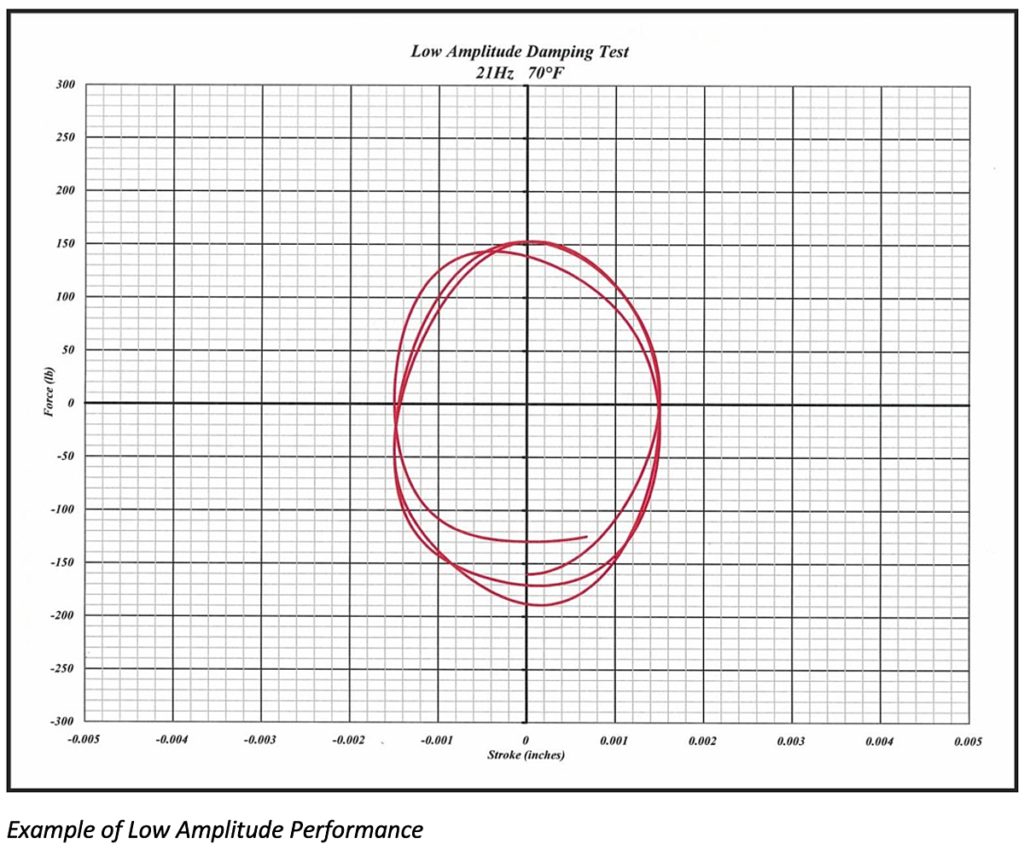
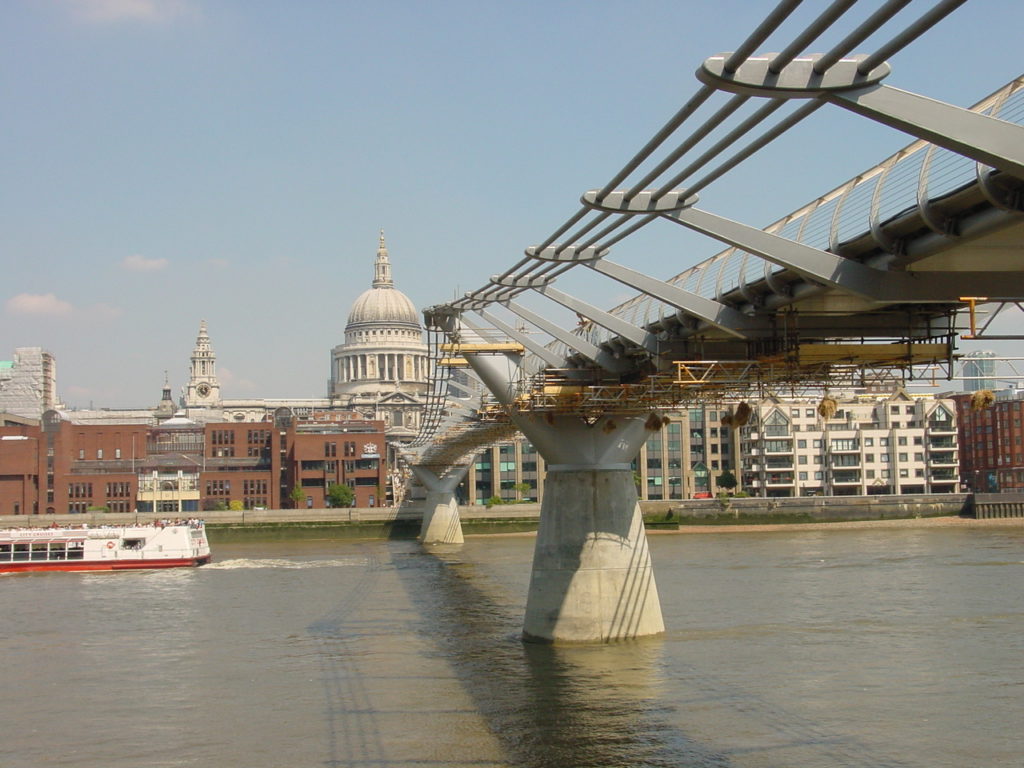
Examples of Low Amp Dampers
One example of where low amplitude dampers are used is on the Millennium Bridge in London, England. After initially opening, the bridge was closed, due to large lateral deck motions. Seemingly random pedestrian footfalls were causing resonance of the bridge deck, with lateral accelerations measuring up to 0.25 g. The selected method of retrofit was to add low amplitude dampers that were designed to be used for mitigating the dynamic response of the bridge due to pedestrian traffic. Despite the bridge experiencing foot traffic every day and night, the low amplitude dampers are able to handle the constant low displacement without any degradation in the damper performance or in the dynamic response of the bridge itself.
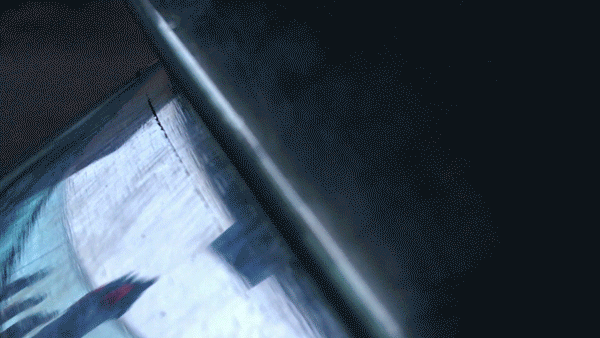
Damper on Millennium Bridge stroking
Another structure that utilizes low amplitude dampers is in 250 West 55th Street in New York City. Unlike traditional fluid viscous dampers that would be used in buildings for seismic loads, these dampers were used to protect the building from wind loads. Since the displacements from high winds are much smaller and cyclical, the low amplitude dampers were able to replace some of the braces in the outrigger trusses at the top of the tower and actually cut overall costs of the project.

Contact Taylor Devices
If you would like to learn more about low amplitude dampers from Taylor Devices, please feel to reach out and our team. Whether you have general questions about these dampers and their applications, or you already have a project that needs displacements as low as 0.001 inches (0.0254mm), we are ready to assist you.
Check out the latest episodes of the Damp It Out! Podcast to learn even more about the world of shock and vibration control.

